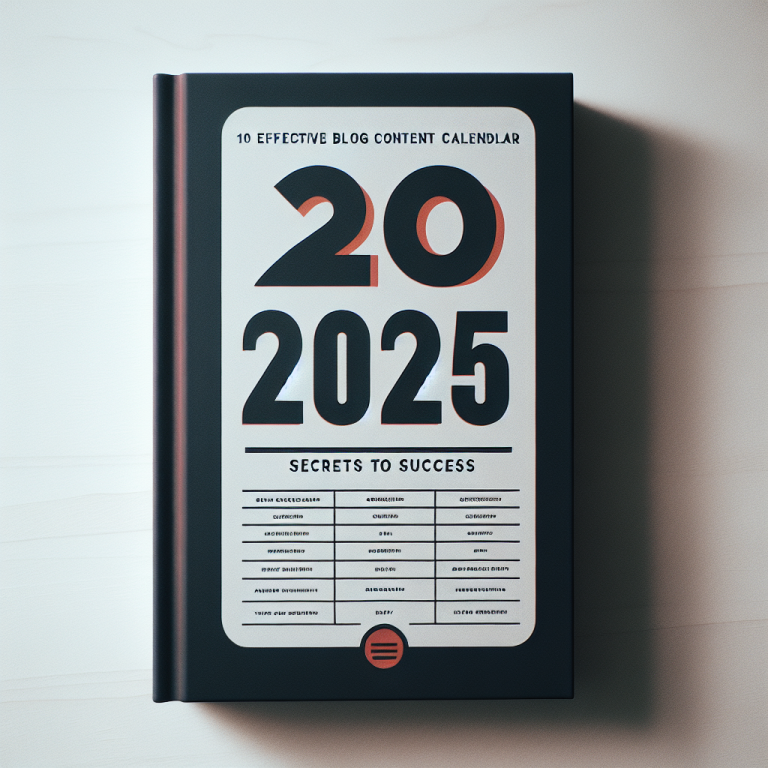How to Write for Your Audience: 7 Effective Strategies for 2025
- 1. Understand Who Your Audience Is
- 2. Research Their Preferences and Needs
- 3. Create Audience Personas
- 4. Tailor Your Tone and Style
- 5. Leverage Data and Analytics
- 6. Engage and Interact with Your Audience
- 7. Continuously Improve Your Content Strategy
1. Understand Who Your Audience Is
Identify Demographics and Psychographics
Knowing your audience starts with understanding who they areâdemographics such as age, gender, location, and education level provide foundational insights. For example, in 2025, marketers are increasingly using AI tools to analyze audience data, enabling even more precise targeting. Psychographics, including interests, values, and lifestyle, deepen your understanding and help you craft content that resonates.
Research shows that personalized content can boost engagement by up to 80%, emphasizing the importance of understanding your audience. Use surveys, social media insights, and analytics to gather this information. By truly knowing your audience, you can craft messages that speak directly to their needs and preferences.
Identify Their Pain Points and Aspirations
Effective content addresses the pain points and aspirations of your audience. Ask yourself: What challenges do they face? What dreams or goals are they pursuing? For example, if your audience is small business owners in 2025, they might struggle with digital transformation or marketing automation. Creating solutions-oriented content makes your writing more valuable.
Engaging with your audience through comments, surveys, and direct interactions can reveal unspoken desires and frustrations. When you understand their pain points, your content strategy becomes more targeted, increasing your chances of building trust and loyalty.
2. Research Their Preferences and Needs
Utilize Market and Trend Data
Staying updated with the latest trends in 2025 is crucial. Use industry reports, social media analytics, and tools like Google Trends to track what topics your audience cares about. This helps you prioritize content that is relevant and timely.
For instance, emerging technologies like AI and sustainability are shaping consumer preferences. If your audience shows interest in green solutions, incorporating related content will make your content more appealing and authoritative.
Monitor Engagement Metrics
Pay close attention to how your audience interacts with your content. Metrics such as click-through rates, time on page, shares, and comments provide valuable feedback. A high bounce rate may indicate misaligned content, while high engagement signals that you’re on the right track.
Tools like Google Analytics and social media insights can help you identify what works and what doesnât. Use this data to refine your approach continually and ensure you’re learning how to write for your audience more effectively over time.
3. Create Audience Personas
Building Detailed Profiles
Creating detailed personas involves synthesizing your research into semi-fictional characters that embody your typical audience segments. These personas help you visualize who you’re writing for, making your messaging more focused.
Include details such as demographics, interests, challenges, and preferred content formats. For example, a persona might be âSamantha, a 35-year-old marketing manager interested in AI tools for small businesses.â
Using Personas to Guide Content Creation
Keep these personas handy when planning and writing your content. Ask yourself: Would Samantha find this helpful? Is the tone appropriate? This practice ensures your content remains relevant and engaging.
According to recent research, content tailored to specific personas often results in a 2x higher conversion rate, proving that knowing your audience deeply impacts your success.
4. Tailor Your Tone and Style
Match Your Audienceâs Communication Style
In 2025, communication styles are more diverse than everâlisteners and readers expect authenticity and relatability. Adjust your tone based on your audienceâs preferences. For a younger demographic, a casual, conversational tone works well, while a professional tone may suit B2B audiences better.
Consider the vocabulary, slang, and formality levels your audience uses daily. For example, Gen Z audiences prefer humor, emojis, and informal language, whereas executive professionals may prefer concise, authoritative content.
Establish a Consistent Voice
Consistency in your tone helps build brand trust. Develop style guides and voice standards based on your audience’s expectations. This uniformity creates a seamless experience that strengthens your connection over time.
Regularly revisit and update your tone guidelines to reflect evolving audience preferences, especially as cultural and communication norms shift in 2025.
5. Leverage Data and Analytics
Optimize Content with Insights
Using data is essential in 2025 for understanding how your audience interacts with your content. Analytics reveal what topics generate the most interest, which keywords attract traffic, and what times your audience is most active.
Implement A/B testing for headlines, images, and calls to action, then analyze performance to refine your approach continuously. This iterative process makes your content more effective over time.
Predict Future Trends
Artificial intelligence and machine learning are transforming content strategy. These tools can now predict upcoming audience interests based on current data patterns, giving you a competitive edge.
Staying ahead of trends ensures that youâre not only answering the question of how to write for your audience but also anticipating their future needs in 2025 and beyond.
6. Engage and Interact with Your Audience
Foster Genuine Engagement
Interaction is key in building a loyal following. Respond to comments, ask questions, and invite feedback. This two-way communication shows your audience that you care about their opinions and helps you understand their evolving needs.
Social media platforms like TikTok, Instagram, and LinkedIn emphasize real-time engagement. Utilize polls, live sessions, and user-generated content to foster a community atmosphere.
Build a Community Around Your Content
Creating dedicated spaces such as forums, Facebook groups, or Discord servers can deepen relationships. These communities offer insights into your audienceâs aspirations and concerns, guiding your content creation.
Engaging openly and authentically makes it easier to learn how to write for your audience because it creates a feedback loop and trust foundation.
7. Continuously Improve Your Content Strategy
Gather Ongoing Feedback
Adapting to your audienceâs changing preferences is vital. Use surveys, reviews, and monitoring tools to gather ongoing feedback. What worked in 2024 may need tweaking in 2025, especially with rapid technological shifts.
Encourage your audience to share their thoughts and suggestions actively. This openness helps you stay aligned with their expectations.
Analyze and Evolve
Regularly review your analytics and adjust your strategy accordingly. Be willing to experiment with new formats like short-form videos, podcasts, or interactive content to meet diverse learning styles.
By constantly evolving, you master the art of how to write for your audience, ensuring your content remains relevant and impactful in 2025 and beyond.
Conclusion
Learning how to write for your audience is an ongoing process that combines research, understanding, and adaptability. In 2025, successful content creators leverage data, personalization, and genuine engagement to connect deeply with their readers. By applying the seven strategies outlined above, you will be well-equipped to meet and exceed your audienceâs expectations.
Remember, the key to effective communication lies in knowing your audience inside out and continuously refining your approach. Mastering how to write for your audience will help you build trust, increase engagement, and achieve your goals in 2025 and beyond.
Frequently Asked Questions
1. What is the best way to learn how to write for your audience?
The best way is to research your audience thoroughly, use data analytics, and engage with them regularly. Creating detailed personas and continuously adapting your content based on feedback are also highly effective strategies.
2. How often should I revisit my audience research?
Ideally, revisit your audience research quarterly, especially in 2025 when trends evolve rapidly. Staying updated ensures your content remains relevant and engaging.
3. Why is it important to tailor your tone to your audience?
Matching your tone and style to your audienceâs preferences builds trust and makes your content more relatable. It increases engagement and the likelihood of achieving your communication goals.
4. How do data and analytics help in learning how to write for your audience?
Data reveals what content resonates most, helps identify trending topics, and enables personalized messaging. Analytics allow you to refine your strategy, ensuring your writing effectively connects with your readers.
5. What are some common mistakes when trying to understand your audience?
Common mistakes include relying on assumptions instead of data, neglecting audience feedback, and failing to adapt content strategies over time. Continuous learning and flexibility are key to success.









